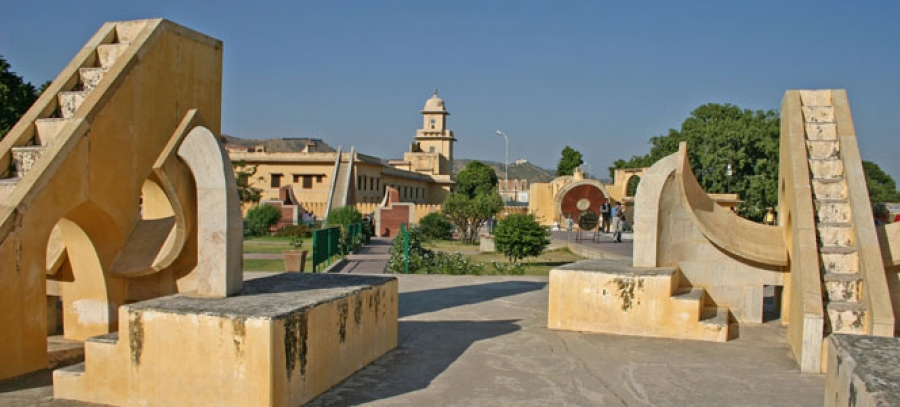Jantar Mantar is the a masterpiece of architecture situated in Jaipur, the capital city of Rajasthan. Maharaja Jai Singh II of Jaipur constructed 5 observatory in west central in India between 1727 to 1734. And Jantar Mantar in Jaipur is the largest of all.
The Jantar Mantar was essentially a Sanskrit word yantra mantra meaning instruments and formulae but later due to mispronunciation it was changed to the known name. Jantar Mantar was built not only to verify astronomical observations made at Jaipur, but also to stimulate interest in astronomy, which had become enmeshed in theory, superstition and religious jargon.
Sawai Jai Singh sent his colleagues to all parts of the world before starting the construction of this observatory. They all returned with many manuals on astronomy containing cutting-edge technological information. One of these manuals was a copy of La Hire's "Tables". The king ordered the observatory to be built according to the details contained in this manual.
The Observatory
Jai Singh had the choice either to construct the observatory with metal instruments or masonry instruments. The metal instruments, constructed according to the texts of the Islamic school of astronomy, did not measure up to Jai Singh's expectations. So, he discarded them in favor of the instruments of stone and masonry that he himself designed. The observatory at Jaipur endorses the samrat yantra, the jaiprakash yantra, ram yantra and the 'composite instrument' that includes a sundial and a massive hemisphere on the northern wall.
